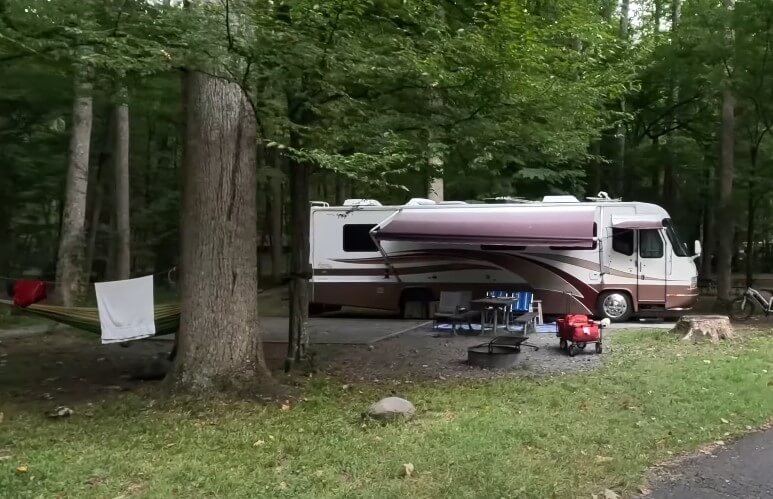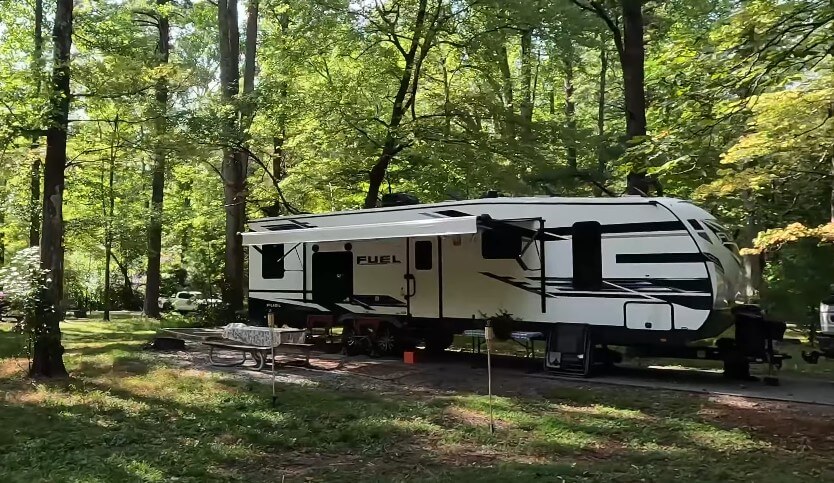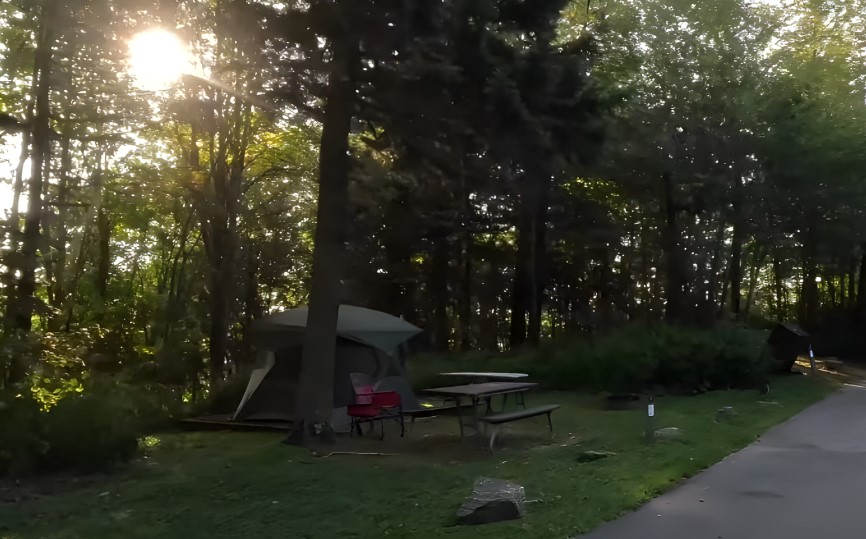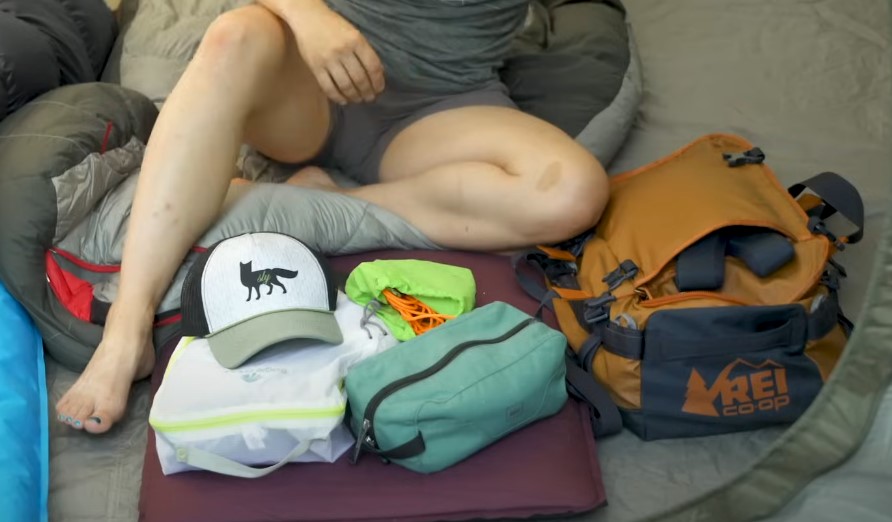Great Smoky Mountains National Park offers a rare blend of scenic beauty, outdoor recreation, and biodiversity that attracts both anglers and tent campers.
Its flowing streams, thick woodlands, and high elevations make it one of the best spots in the eastern U.S. for people seeking solitude and adventure in nature.
Trout-filled creeks run through quiet forests, providing ideal spots to fish during the day and camp under the stars at night.
Spring through fall presents the best window for camping and fishing, with summer offering the most accessible conditions.
Winter conditions may be unpredictable and can restrict access to certain areas. Visitors need to prepare with appropriate permits and reservations, particularly during peak seasons.
Both Tennessee and North Carolina fishing licenses may be required, and most campgrounds are booked via Recreation.gov.
Top Tent Camping Spots Near Fishing Waters

Camping in Great Smoky Mountains National Park offers more than just a place to sleep.
It becomes part of the experience, a way to stay close to trout streams, hikeable trails, and wildlife.
Choosing a tent campsite near productive fishing waters can shape the rhythm of the entire visit.
Several campgrounds provide this seamless mix of comfort, accessibility, and river access.
Elkmont Campground (North Side)
Elkmont remains the most well-known and largest campground in the park.
Located along the Little River, it’s a hotspot for trout fishing.
Its walk-in, tent-only riverside sites offer a peaceful setting just steps away from excellent fishing holes.
- Proximity: Near Gatlinburg
- Highlights: Walk-in sites, Little River fishing, easy access to trails
Smokemont Campground (South Side)
Smokemont sits near the Bradley Fork and Oconaluftee River.
With lush grassy areas and year-round access, it’s a favorite for families and anglers alike.
Tent sites are available alongside RV spaces.
- Proximity: Near Cherokee, NC
- Highlights: Access to Oconaluftee River, scenic setting, open year-round
Cades Cove Campground (West Side)

Cades Cove offers an immersive wilderness experience, with access to streams and rich wildlife activity.
Historical buildings nearby enhance the sense of being part of a bygone era.
- Proximity: Near Townsend, TN
- Highlights: Scenic drives, abundant wildlife, trout streams
Deep Creek Campground (Southeast Side)
Deep creek campground features fishing near waterfalls like Tom Branch Falls. Biking and hiking trails also begin nearby.
Fewer crowds and proximity to Bryson City’s amenities make it a hidden gem.
- Proximity: Near Bryson City, NC
- Highlights: Creek fishing, waterfalls, peaceful environment
Lesser-Known or Remote Options

Balsam Mountain Campground
One of the park’s highest elevation sites, Balsam Mountain offers crisp air, fewer people, and scenic views.
Great for those who want hiking and fishing without the crowds.
- Proximity: Off Heintooga Ridge Road
- Highlights: Cooler temperatures, remote feel, great hiking access
Cataloochee Campground (East Side) (Temporarily Closed as of 2025)
Known for solitude and fishing in Palmer Creek, Cataloochee is a serene escape.
Reaching it involves a scenic but rugged drive, adding to its sense of isolation.
- Proximity: Near Maggie Valley, NC
- Highlights: Trout fishing, wildlife viewing, peaceful setting
Planning a Trip
Planning a fishing and tent camping trip in the Great Smoky Mountains requires more than a spontaneous drive and a packed cooler.
Timing, permits, and weather all factor into making the experience smooth and worthwhile.
Late spring through early fall typically offers the best combination of:
- Mild temperatures
- Manageable humidity
- Active fish
While summer brings bigger crowds, it also delivers longer daylight hours and easier river access.
Spring, particularly April and May, sees snowmelt and rain swelling the streams, drawing trout closer to the surface.
Autumn provides cooler air, vivid foliage, and a more tranquil experience for those who prefer fewer neighbors at the campground.
High-elevation areas such as Balsam Mountain and Clingmans Dome hold cooler temperatures well into summer, which helps keep trout active.
In contrast, lowland regions near Cades Cove and Elkmont warm quickly and favor early-season fishing.
Checking water levels and temperatures ahead of your trip can make the difference between a quiet day on the river and a frustrating one.
Fishing seasons in the park align with both Tennessee and North Carolina regulations. Brook, rainbow, and brown trout each have specific rules regarding size, bait, and daily limits.
Certain streams may close temporarily to protect spawning fish, especially in fall.
Anglers are expected to use artificial flies or lures with a single hook, and live bait is not permitted in most areas of the park.
Before heading out, consult the official park website or the TWRA and NCWRC portals for the most current rules.
I’m considering a transition from RV travel to more minimalist tent camping. This might be the right time to consider options to sell my RV before I embrace a lighter, more flexible style of adventure.
Fishing Opportunities in the Smokies
View this post on Instagram
Fishing in Great Smoky Mountains National Park offers an experience defined by clean waters, rugged trails, and wild trout populations.
Over 2,000 miles of streams wind through the park, many of which are fishable year-round.
Some of the most accessible and rewarding trout streams include:
- Little River
- Bradley Fork
- Oconaluftee River
Little River, especially near Elkmont, offers long stretches of easily reachable water and is known for its rainbow and brown trout.
Bradley Fork, near Smokemont Campground, runs cool and clear, perfect for fly fishing.
Oconaluftee River, with its deep runs and shaded pools, is another favorite for anglers trying to find active trout during the summer.
Backcountry Camping with Fishing
Backcountry camping offers a rewarding mix of isolation and immersion in nature. Sites near Forney Creek and Hazel Creek are especially favored by anglers.
These areas require a good hike and adherence to safety protocols, including bear safety.
Permits are required for all backcountry camping, and proper planning includes:
- Route selection
- Gear evaluation
- Weather monitoring
Food storage must follow park guidelines, and all trash should be packed out.
What to Pack?

Tent campers should bring lightweight but sturdy gear. Weatherproof tents, warm sleeping bags, and insulated pads are essential. Nights can get cold, even in summer.
Fishing gear should match trout stream conditions: fly rods, barbless hooks, and artificial lures. Always carry a fishing license and know the rules.
Along with weatherproof tents and insulated sleeping gear, pack tactical boots designed for rough trails and variable conditions. Their rugged build helps protect your feet during long hikes and stream crossings.
Bear-safe food containers are mandatory in backcountry areas. Firewood must be certified pest-free or collected on site. Bring GPS, maps, and a printed trail guide to avoid relying on phone service.
Summary
Great Smoky Mountains National Park offers a rare outdoor experience combining fishing, hiking, and tent camping.
With careful planning, permits, and the right gear, every visitor can find their rhythm along the streams or under the stars.
Plan ahead, leave no trace, and let nature work its quiet magic.

